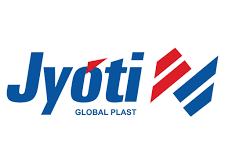In the present day where, cyber threats are increasingly sophisticated and pervasive, organizations are turning to Zero Trust Architecture (ZTA) to fortify their cybersecurity defenses. Zero Trust operates on the principle that no entity, whether inside or outside the network, should be trusted by default. Instead, every access request must be continuously verified, ensuring robust protection against potential breaches.
It is important to understand the key challenges of implementing ZTA and realize the significant benefits it offers for successful implementation and maximal usability.
The Core Principles of Zero Trust Architecture
The Zero Trust Architecture (ZTA) model has emerged as a game-changer, revolutionizing how organizations secure their networks. This meticulous approach is gaining traction, with the global Zero Trust security market soaring to over $31.6 billion in 2023 and projected to reach an astounding $133 billion by 2032. As we progress into 2024, innovative trends like Remote Browser Isolation (RBI) are set to further enhance the robustness of Zero Trust, making it indispensable in the modern cybersecurity landscape.
Zero Trust Architecture is built on three fundamental concepts:
Verify Explicitly: Every access request, whether from a person or a device, must be rigorously authenticated, authorized, and continuously validated for security configuration and posture before being allowed access to resources.
Use Least Privileged Access: This principle limits user access with Just-Enough-Access (JEA) and Just-in-Time (JIT) principles, reducing the attack surface by providing users only the access they need to perform their tasks and nothing more.
Assume Breach: Operating under the assumption that breaches can and will occur, this principle focuses on minimizing the impact of a breach by segmenting access, limiting lateral movement within the network, and enhancing monitoring for abnormal activity.
Key Challenges of Implementation of Zero Trust Architecture
Implementing Zero Trust Architecture presents several challenges, warranting a balance of robust security measures with network performance for a seamless user experience.
Complex Integration: Implementing Zero Trust can be daunting due to the complexity of designing, deploying, and managing it. It involves defining granular policies for every resource, segmenting the network into micro-perimeters, and continuously monitoring all traffic and activity. Integration of multiple tools and technologies, such as identity and access management, encryption, endpoint protection, and network firewalls, requires a high level of expertise and coordination.
Cultural Shift: Shifting from a traditional security mindset to a Zero Trust model requires significant cultural change. Organizations must educate and train employees, partners, and customers on new policies and procedures. Balancing security and usability to avoid unnecessary friction for legitimate users is crucial.
Resource Intensive: Implementing Zero Trust involves substantial investment in new hardware, software, and services. Allocating sufficient budget and resources for initial implementation, ongoing maintenance, and updates is essential. Measuring and justifying the return on investment (ROI) and the value proposition of Zero Trust can be challenging.
Performance Impact: Continuous verification processes, a cornerstone of Zero Trust Architecture, can significantly impact network performance and user experience. Each access request requires rigorous authentication and authorization, which can introduce latency and slow down operations. Users might experience delays and disruptions, leading to frustration and reduced productivity. Organizations must optimize their systems to minimize performance degradation while maintaining stringent security protocols.
Significant Benefits
Enhanced Security: Zero Trust enhances security posture and reduces the attack surface. By applying the principle of least privilege, access and privileges of each user and device are limited to the minimum necessary. Network segmentation isolates and contains potential threats. Encrypting and inspecting all traffic prevents data leakage and malicious activity. Increased visibility and accountability are achieved by verifying and auditing everything.
Business Agility: Zero Trust enables business agility and innovation. Adopting a cloud-native and device-agnostic approach supports digital transformation and mobility initiatives. Simplifying and automating security processes improves efficiency and scalability.
Improved Visibility: Zero Trust provides comprehensive visibility into user activities and network traffic. This heightened awareness enables organizations to detect and respond to threats more swiftly and effectively.
Compliance: Zero Trust helps comply with regulatory and industry standards and best practices. It demonstrates commitment and readiness to protect data and assets from cyberattacks, meeting the requirements and expectations of customers, partners, and stakeholders regarding security and privacy. This approach also reduces the risk and impact of potential fines, penalties, or lawsuits.
In conclusion, Zero Trust Architecture represents a paradigm shift in cybersecurity, addressing the limitations of traditional perimeter-based defenses. While the journey to Zero Trust can be fraught with challenges, the rewards—enhanced security, improved visibility, regulatory compliance, and scalability—make it a worthwhile investment. As cyber threats continue to evolve, adopting a Zero Trust approach will be crucial for organizations seeking to safeguard their digital assets and maintain resilience in an increasingly hostile cyber landscape.
Prashant G J, CEO Technobind Solutions
 Newspatrolling.com News cum Content Syndication Portal Online
Newspatrolling.com News cum Content Syndication Portal Online







